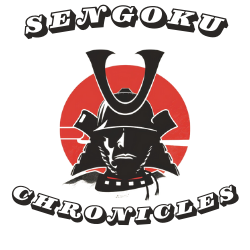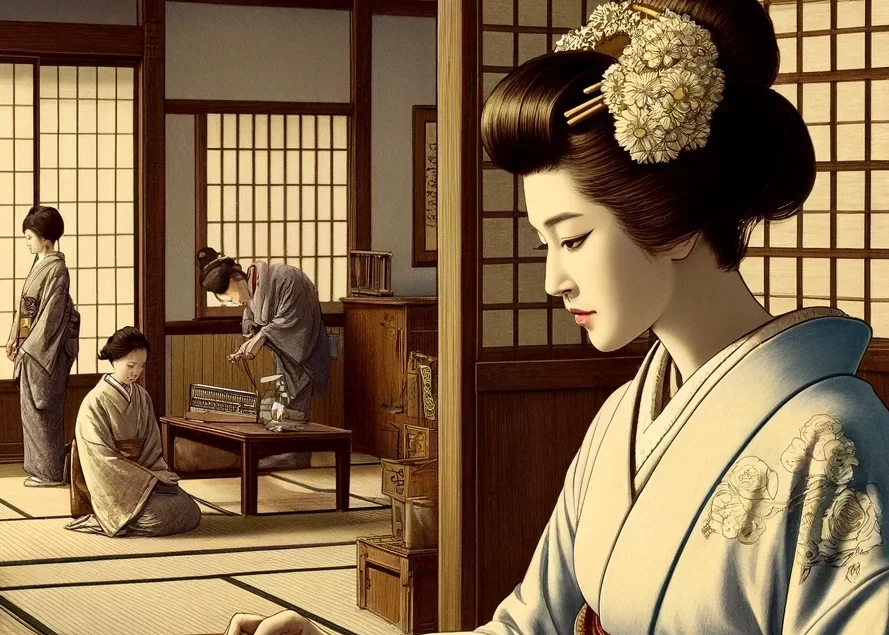Introduction
The Sengoku Era, a pivotal period in Japanese history from 1467 to 1615, was marked by relentless warfare, shifting allegiances, and profound societal changes. During this time, known also as the “Age of Warring States,” regional lords (daimyos) battled fiercely for supremacy, forging and breaking alliances in a dynamic struggle for power. As castles rose and fell, so too did the fortunes of countless families caught in the crossfire of ambition and conquest.
In the midst of this chaos, the roles and lives of women in Japanese society underwent significant transformations. Traditionally depicted as passive observers or silent victims of male-dominated warfare, recent historical studies have begun to paint a more complex and dynamic picture of women’s involvement. From managing vast estates in their husbands’ absences to actively participating in political strategizing and even direct combat, women in the Sengoku Era exhibited remarkable resilience and influence.
This blog post aims to explore the multifaceted roles of women during these turbulent times. By examining their daily lives, notable figures, cultural impacts, and the unique challenges they faced, we will uncover the vital yet often overlooked contributions of women to the social and political tapestry of Sengoku Japan. Through this exploration, we not only gain insight into the era’s gender dynamics but also enrich our understanding of how women navigated and shaped the course of Japanese history during one of its most tumultuous periods.
Section 1: Historical Context
The Sengoku Era, spanning from the mid-15th to the early 17th century, was a time of unprecedented upheaval in Japan. It began with the Ōnin War, which erupted in 1467 over a dispute concerning imperial succession, and set off a century of conflict that would eventually lead to the unification of Japan under Tokugawa Ieyasu. This period was characterized by the rise and fall of powerful warlords, or daimyos, each vying for land and power in a fractious feudal landscape.
Feudal Structure and Political Ambition
During the Sengoku Era, Japan was not a unified nation but a patchwork of competing domains, each governed by a daimyo with nearly autonomous power. The central authority of the Ashikaga Shogunate waned, giving rise to regional lords who built up private armies and fortified their castles. The political environment was fluid, with alliances forming and dissolving as opportunism and military strategy dictated.
Societal Structure
Feudal Japan was rigidly hierarchical. At the top were the samurai, including the daimyo and their retainers, who were bound by codes of loyalty and honor. Below them were the peasants, who farmed the land and paid taxes, artisans who crafted everything from weapons to everyday household items, and merchants who traded goods across regions. Women’s roles within this hierarchy were largely determined by their social class and the status of their family. While samurai women were expected to manage households and even learn to defend them, peasant women worked the fields alongside men and contributed to the family’s income.
Women’s Roles and Rights
In this era, women’s rights and roles were heavily influenced by Confucian ideals, which emphasized subservience and loyalty. Women were generally expected to obey their fathers, husbands, and sons. Despite these restrictions, many women managed large estates in the absence of their husbands or fathers, who were often away at war. The necessity of managing these responsibilities granted them significant authority within the household and, by extension, within society.
Impact of Constant Warfare
The near-constant state of war had profound effects on the social structure of Japan. Families were often uprooted, lands were ravaged, and the social order was perpetually unstable. In these conditions, the roles of women could be both restrictive and, paradoxically, liberating. The turmoil sometimes necessitated that women take on roles that were traditionally reserved for men, such as negotiating in political affairs or defending their homes in times of siege.
This historical context sets the stage for a deeper exploration of the specific roles and notable women of the Sengoku Era, shedding light on how they navigated a landscape defined by warfare and shifting power dynamics. Through this examination, we can begin to appreciate the nuanced ways in which women influenced and were affected by the events of this defining period in Japanese history.
Section 2: Notable Women of the Sengoku Era
The Sengoku Era, though dominated by male warlords and samurai, also saw significant contributions from women, who were pivotal in shaping the political landscape of their time. These women were not merely bystanders but were active participants in the arenas of war and politics, often wielding considerable influence behind the scenes. Here, we explore a few of the most notable women whose actions left indelible marks on Japanese history.
Nene (Lady Kita no Mandokoro)
Nene was the principal wife of Toyotomi Hideyoshi, one of Japan’s great unifiers. Known for her wisdom and political acumen, Nene played a crucial role in advising her husband and managing his vast estates. Even after Hideyoshi’s death, she remained influential in the political sphere, ensuring the smooth transition of power to Tokugawa Ieyasu. Her diplomatic skills and adept handling of estate management highlight the critical roles women could play in governance.
Oichi
Oichi, sister to the powerful daimyo Oda Nobunaga, was a key figure in the political machinations of her time. Her marriages were strategic alliances that served to bind powerful men to her brother’s cause. After Nobunaga’s death, she married Shibata Katsuie, and later, her daughters were married off to influential families to further political alliances. Her life is a testament to how women were used as political pawns, yet she also exerted her own influence and agency within these constraints.
Lady Murasaki (Murasaki no Tsubone)
Lady Murasaki, although less known, was significant for her role in defending her family’s domain. She is credited with leading the defense of her castle in her husband’s absence. Her strategic acumen in organizing the troops and fortifying defenses was crucial in repelling invaders, showcasing the military roles that some women took on during this era.
Tsuruhime
Tsuruhime is famed as the “Joan of Arc of Japan” for her spirited defense of her family’s domain at a young age. After her father’s death, she assumed leadership and led attacks against opposing clans, even engaging in personal combat. Her leadership and bravery in battle are exceptional examples of women taking active military roles during the Sengoku Era.
These stories illustrate the diverse roles women occupied during the Sengoku Era, from political strategists and estate managers to defenders and warriors. Their lives reflect a complex interplay of societal expectations, personal agency, and the harsh realities of a country in turmoil. Through their actions, these women not only managed to assert their influence in a male-dominated society but also left a lasting legacy that challenges our understanding of gender roles in feudal Japan.
Section 3: Daily Lives of Women
The daily lives of women during the Sengoku Era varied widely based on their social status and the region they lived in. Despite the overshadowing presence of constant warfare, women at all levels of society managed to exert influence and fulfill essential roles within their communities. This section explores the typical day-to-day experiences of women from different social strata during this tumultuous period.
Samurai Women
Women of the samurai class were expected to be the caretakers of the household, which included managing the family’s finances, supervising servants, and maintaining the home. Their responsibilities increased significantly when their husbands or male relatives were away at war. Samurai women were also expected to be educated in the arts, such as calligraphy and tea ceremony, which were considered essential for maintaining the cultural prestige of their families. Moreover, in times of need, they were trained to defend their homes and could engage in combat, emphasizing their dual roles as both managers and protectors.
Peasant Women
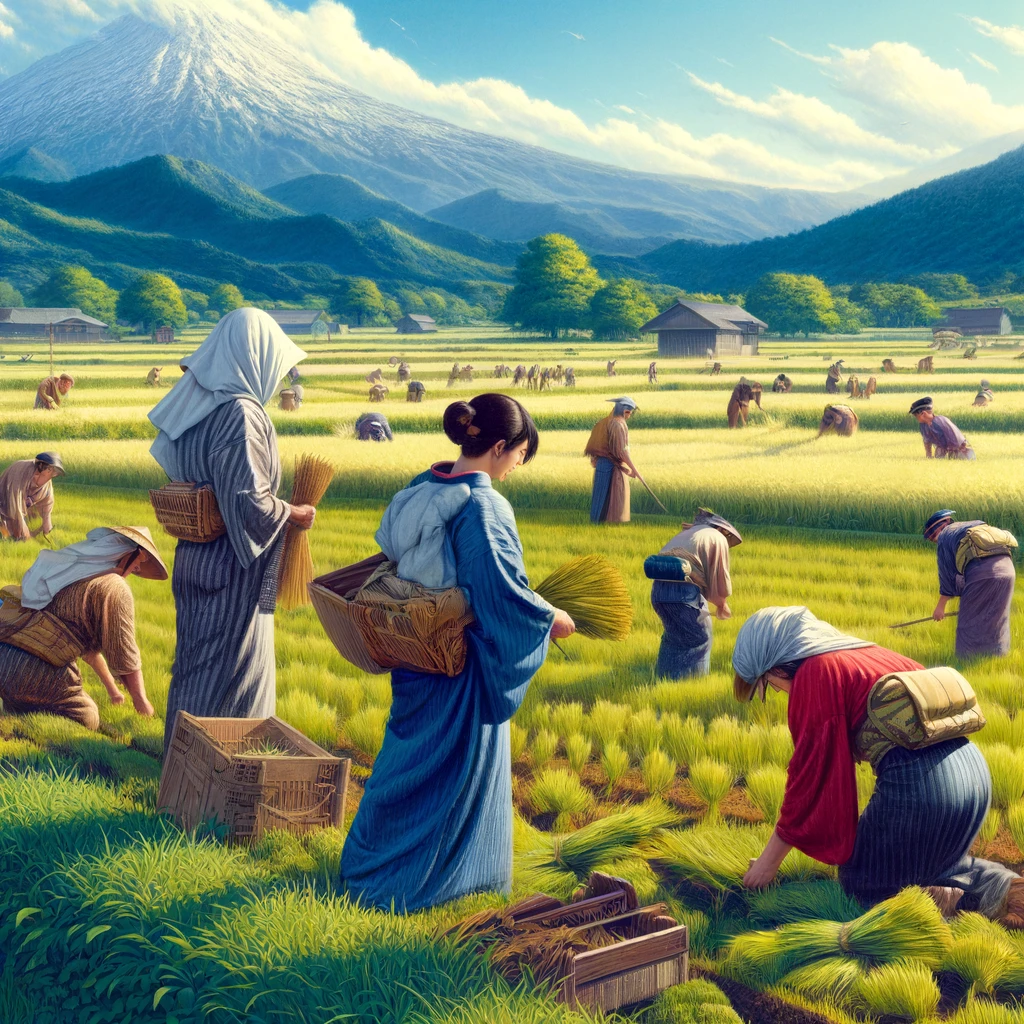
The majority of women during the Sengoku Era were peasants, who played a vital role in Japan’s agrarian economy. They worked side by side with men in the fields, planting and harvesting crops such as rice, which was the staple of the Japanese diet. Peasant women also tended to household chores, cared for children, and managed food preparation. Despite their hard labor, these women had limited social mobility and fewer rights compared to women of higher social classes.
Artisans and Merchants
Women in artisan and merchant families contributed directly to the family business. Artisan women might be involved in pottery, textile weaving, or other crafts crucial for economic sustenance. Merchant women helped in the management of shops or trade endeavors, often dealing with accounts and customer relations. Their roles were crucial in ensuring the smooth operation of family businesses, and in many cases, they took over businesses when male heads were absent.
Education and Literacy
Education for women was not universally prioritized but varied greatly depending on the family’s status and perspective towards female roles. Educated women were usually from samurai or wealthy merchant families, where literacy and a knowledge of the arts were considered beneficial for both managing households and social networking. The ability to read and write allowed women to maintain correspondence and manage estate documents, which could be essential in times of political maneuvering.
Religious Life
Some women chose or were given into religious life, becoming nuns in Buddhist temples or Shinto shrines. This path provided an alternative to the traditional roles of wife and mother, offering a degree of independence and the opportunity to focus on spiritual pursuits. Religious women often became respected figures within their communities, providing guidance and education.
The daily lives of women during the Sengoku Era reflect a complex interplay between societal expectations and the realities imposed by a country in constant conflict. From the households of mighty samurai to the fields of the rural peasantry, women played indispensable roles that sustained and enriched their communities even in the face of relentless adversity.
Section 4: Women in Warfare
During the Sengoku Era, women’s roles in warfare were multifaceted and crucial, extending beyond the conventional boundaries set by a predominantly patriarchal society. While the prevailing image of this period is dominated by male samurai and warlords, women were actively involved in various aspects of warfare, both directly and indirectly. This section explores how women participated in the military engagements of the era and the strategic roles they played.
Direct Participation in Combat
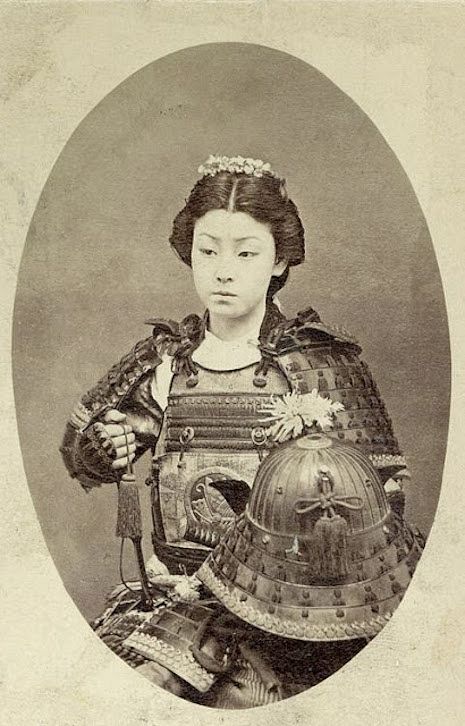
Though not commonly soldiers on the frontline, there were notable exceptions where women took up arms. Samurai women, known as “onna-bugeisha,” were trained in the use of weapons like the naginata (a pole weapon with a curved blade) and the kaiken (a small dagger) to protect their households, especially during sieges when castles were attacked in the absence of male warriors. Historical accounts and folklore often highlight the bravery of these women, who stood as the last line of defense for their families and estates.
Strategic and Support Roles
Beyond direct combat, women often played strategic roles in warfare. They managed castles and resources, which was crucial in maintaining the war effort, especially when male family members were away on campaigns. Women in positions of power could influence military strategies through their roles as advisors and regents. In several documented cases, women negotiated alliances and even commanded armies as de facto leaders.
Espionage and Diplomacy
Women also engaged in espionage and intelligence gathering. Their ability to move across enemy lines under the guise of diplomatic missions or seemingly innocuous visits allowed them to gather vital information that could turn the tides of battle. Their roles in diplomacy were pivotal during negotiations, where they could serve as mediators to broker peace or form new alliances, utilizing their familial and marital connections.
Psychological Warfare
In some instances, women participated in psychological warfare by boosting the morale of their own troops and demoralizing the enemy. Legendary tales recount women who led troops into battle, their presence serving as a rallying point for their forces and a symbol of resistance against invaders. The mere act of a woman taking up arms could be a powerful psychological tool, both inspiring her allies and undermining stereotypical expectations.
Legacy of Women Warriors
The impact of women in Sengoku warfare went beyond the battlefields. They contributed to the military legacy of their families, preserved through stories and records that inspire even modern audiences. Their involvement demonstrates the necessity of reevaluating the traditional narratives of warfare, recognizing the significant, albeit often underrepresented, role women played in the conflicts of the Sengoku Era.
Women in the Sengoku Era were integral to warfare, embodying roles that defied simple categorization. From direct combatants to strategic leaders, their contributions were vital not only in the context of individual skirmishes and sieges but also in the broader scope of feudal Japan’s military and political history.
Section 5: Treatment of Women: Ups and Downs
The treatment of women during the Sengoku Era was complex and varied greatly depending on their social status, regional customs, and the prevailing circumstances of the time. This section explores the multifaceted experiences of women, highlighting both the advancements and challenges they faced in a period dominated by warfare and shifting power dynamics.
Positive Aspects
1. Increased Authority in Household and Estate Management: In the absence of husbands, fathers, or brothers who were often away at war, women of the samurai class frequently assumed control over household and estate management. This responsibility not only provided them with a degree of autonomy and respect within their families but also elevated their status in society. Managing large estates involved overseeing agricultural production, resolving disputes, and maintaining the economic stability of their homes, which allowed women to develop and exercise leadership skills.
2. Recognition in Leadership and Governance: Some women achieved recognition in governance, often serving as de facto leaders. Their roles could extend to making crucial decisions for their clans in times of crisis, such as forging alliances through marriage or even negotiating peace treaties. These responsibilities underscored their capability in leadership roles traditionally dominated by men.
Challenges
1. Vulnerability to Violence: The constant state of war heightened vulnerabilities for women, particularly regarding violence and security. Women were often at risk of being attacked during sieges or taken as hostages to leverage political negotiations. The threat of violence was a persistent shadow over their daily lives, significantly influencing their freedom and safety.
2. Political Pawns in Marriage Alliances: Women were frequently used as pawns in the strategic game of marriage alliances. Marriages were arranged without their consent to solidify alliances, acquire lands, or forge peace. Such practices underscored the instrumentalization of women’s lives and choices in the political machinations of the era, often at the cost of their personal happiness and autonomy.
3. Legal and Social Constraints: Despite instances of increased responsibility and authority, women were still bound by stringent social and legal constraints. Confucian ideals promoting male superiority were pervasive, influencing laws and customs that restricted women’s rights in matters of inheritance, divorce, and legal standing. These restrictions were evident in various aspects of life, reflecting the broader societal norms that sought to limit women’s roles to conventional spheres of influence.
Socio-Cultural Impact
The treatment of women during the Sengoku Era also had broader socio-cultural implications. Women’s experiences influenced contemporary literature, performing arts, and the emerging warrior ethos. Narratives from the period, whether in the form of chronicles, folk tales, or plays, often included women’s stories, reflecting their integral role in the cultural fabric of the era.
In summary, the Sengoku Era was a period of significant contrast in the treatment of women. While some found opportunities to wield power and influence rarely afforded to them in more stable times, others faced severe limitations and challenges that underscored their vulnerabilities. Understanding these dynamics offers deeper insights into the complex social structures of feudal Japan and the nuanced roles women played within them.
Section 6: Cultural and Artistic Influence
The Sengoku Era, while primarily known for its military conflicts and political upheaval, was also a period of significant cultural and artistic development. Women, in particular, played crucial roles in preserving and advancing the cultural heritage of Japan during these tumultuous times. Their contributions not only enriched the aesthetic and intellectual life of their society but also ensured the transmission of key cultural values and traditions across generations.
Preservation of Arts and Literature
Women of the samurai class and affluent families were often well-educated and literate, enabling them to participate in and sustain the literary traditions of Japan. They wrote poetry, kept diaries, and composed letters that provide invaluable insights into the era’s social and cultural conditions. These writings were not only personal reflections but also works of art that influenced Japanese literature.
Example: Lady Murasaki Shikibu, attributed to a slightly earlier era, authored The Tale of Genji, which continued to influence women’s literary creations during the Sengoku period. Women used such texts as models for their own writings, which often explored themes of loyalty, tragedy, and the human condition amidst war.
Role in the Tea Ceremony
The tea ceremony, or chanoyu, evolved into a spiritual and social practice during this period, symbolizing harmony, respect, purity, and tranquility. Women were integral to this tradition, both as participants and as hosts. They mastered the intricate rituals of the tea ceremony, which was a significant aspect of elite culture, serving as a peaceful contrast to the era’s prevalent strife.
Women’s involvement in the tea ceremony extended beyond mere participation; they were custodians of its ethos and aesthetics, influencing the artistic aspects of the ceremony, including the choice and arrangement of utensils, which often bore significant artistic merit.
Influence on Arts
Women also contributed to the visual arts, particularly in painting and calligraphy. They were patrons of the arts, commissioning works from renowned artists, which helped sustain the artistic community during unstable times. Additionally, some women were accomplished artists themselves, though their contributions have often been overshadowed by those of their male counterparts.
Example: The work of the Kano school, famous for its painting, was patronized extensively by the elite classes, including women who commissioned religious and decorative works for their residences and temples.
Cultural Education and Transmission
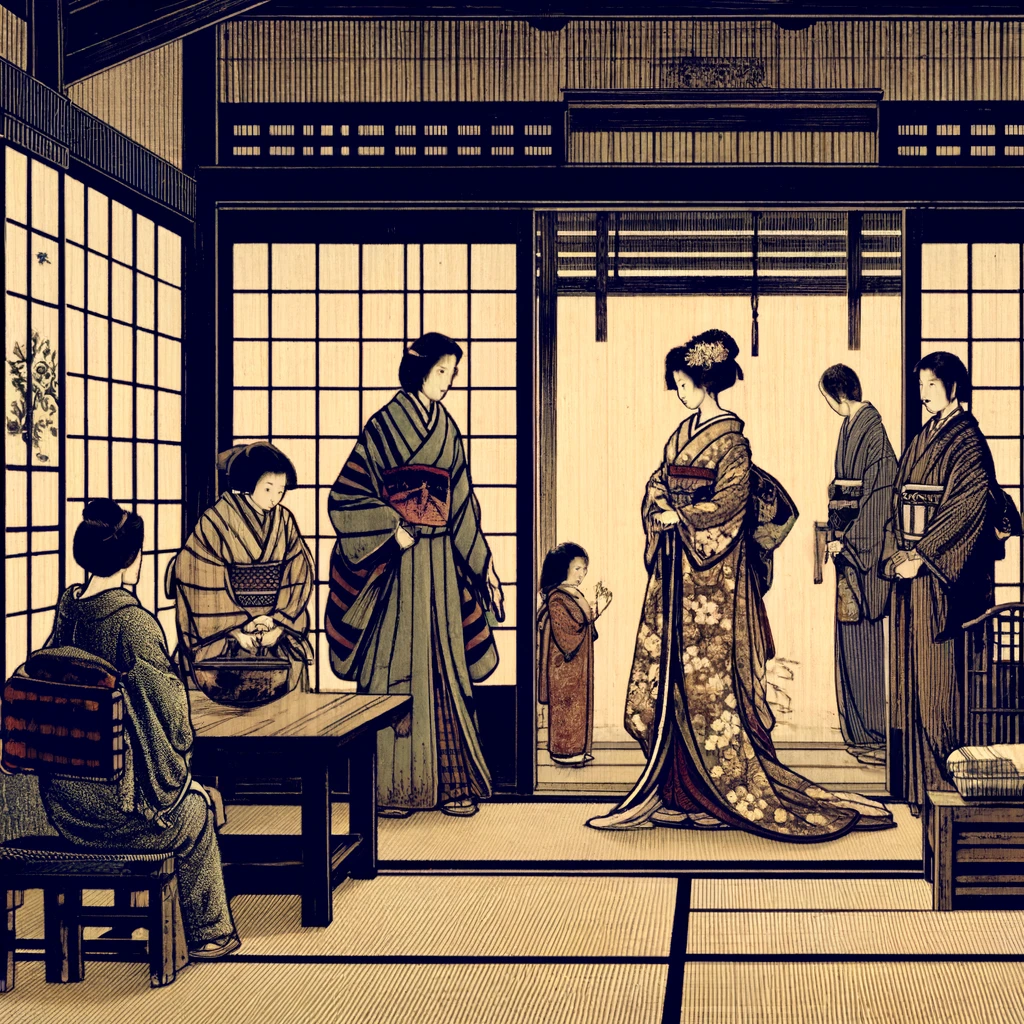
Women were also responsible for the education of their children and the younger members of their households. This role made them pivotal in transmitting cultural values and artistic knowledge to future generations. Through storytelling, teaching traditional music, dance, and other cultural practices, women ensured that the rich tapestry of Japanese traditions was preserved despite the disruptions of war.
Contribution to Performing Arts
The performing arts, particularly Noh theatre and other forms of traditional dance and music, received patronage and participation from women. Though the performing stages were predominantly male, women influenced these arts through their roles as patrons and as teachers in the familial setting, where they passed on dances and songs.
Section 7: Comparisons with Other Eras
Understanding the role of women during the Sengoku Era gains further depth when contrasted with their status in other significant periods of Japanese history. This comparative analysis highlights the evolution of women’s roles and the societal norms that influenced their lives across different eras.
Heian Period (794-1185)
The Heian period, known for its courtly culture and artistic achievements, offered women notably more freedom and influence, especially within the aristocracy. Women such as Murasaki Shikibu and Sei Shonagon were prominent literary figures whose works remain pivotal in the study of Japanese literature. In this era, women of the court engaged in sophisticated literary pursuits and enjoyed a degree of social freedom that would diminish in later periods. The Heian era’s relative peace allowed for the flourishing of a refined courtly life, in which women played central roles in cultural and even political realms.
Kamakura Period (1185-1333)
The transition to the Kamakura Period marked a shift towards a more militaristic society under the rule of the samurai class. This shift saw a decline in the political and cultural freedoms of women. The emphasis on martial values and the rise of the warrior class led to women’s roles becoming more circumscribed, focusing largely on managerial duties at home and moral guardianship of the family. Their participation in literary and artistic activities was still respected but less prevalent compared to the Heian era.
Edo Period (1603-1868)
Following the Sengoku Era, the Edo period ushered in over two centuries of peace under the rule of the Tokugawa shogunate. This stability saw the reinforcement of a strict social order based on Confucian ideals, which prioritized filial piety and rigid class distinctions. Women’s roles became highly regulated during this period; they were often seen primarily as wives and mothers whose main responsibilities were to support their husbands and raise children. The legal and social constraints tightened, limiting their autonomy significantly compared to the Sengoku Era, where the chaos of war sometimes provided opportunities for greater agency and influence.
Meiji Restoration (1868-1912)
The Meiji Restoration marked a significant turning point in Japanese history as the nation opened to the West and began to modernize rapidly. This period brought about mixed outcomes for women. On one hand, modern education systems and new ideologies introduced more opportunities for women in education and employment. On the other hand, the state’s emphasis on building a strong, industrialized nation often reinforced traditional gender roles to maintain social stability. Women’s roles were thus pivotal in the nation-building process, both as part of the workforce and as educators of the next generation, yet still often confined within traditional frameworks.
These comparisons reveal that women’s roles and the perception of women in Japanese society have been highly dependent on the broader socio-political context. Each period brought different opportunities and constraints, reflecting the dynamic and evolving nature of gender roles in Japanese history.
Conclusion
The exploration of women’s roles during the Sengoku Era provides a nuanced view of their contributions and challenges in a period defined by constant warfare and shifting political landscapes. Women in this era were not mere bystanders; they were integral to both the domestic and public spheres, acting as estate managers, warriors, negotiators, and cultural preservers. Their stories offer a compelling glimpse into the complexities of feudal Japan, where societal norms were both upheld and subverted by the necessities of survival and the dynamics of power.
The significance of understanding women’s roles during the Sengoku Era extends beyond historical curiosity. It challenges the traditional narratives that often marginalize women’s experiences and contributions in historical texts. By recognizing the diverse roles women played, we gain a more comprehensive understanding of Japanese history that acknowledges the contributions of all its actors.
Furthermore, comparing the status of women across different periods highlights the fluid nature of gender roles, influenced by economic, social, and political factors. The contrasts between the Heian, Kamakura, Edo, and Meiji periods underscore how shifts in power and social structure can expand or restrict women’s roles in society.
In conclusion, the legacy of women in the Sengoku Era is a testament to their resilience and agency in the face of adversity. It invites us to reconsider and appreciate the intricate tapestry of history that includes the significant, though often overlooked, threads woven by women. Their enduring impact serves as a foundation for understanding the evolution of women’s roles in Japan and offers valuable insights into the broader discourse on gender and power in history.
Further Reading and Resources
For those interested in delving deeper into the history of women during the Sengoku Era and the broader context of Japanese history, the following books, articles, and resources offer detailed analyses and captivating narratives. These works not only enrich understanding of the era but also provide a foundation for appreciating the complex dynamics of gender, culture, and power in historical Japan.
Books
- “Women of the Samurai” by G. Cameron Hurst III – This book provides a detailed exploration of the roles and lives of samurai women, with specific chapters dedicated to notable figures of the Sengoku Era.
- “Samurai Women 1184–1877” by Stephen Turnbull – Turnbull offers a comprehensive look at the military roles of women during the periods of samurai warfare, including the Sengoku Era.
- “The Female as Subject: Reading and Writing in Early Modern Japan” edited by P. F. Kornicki, Mara Patessio, and G. G. Rowley – This collection of essays explores women’s literature and their roles as writers and readers in pre-modern Japan, providing context to their educational and cultural contributions.
- “Queens, Concubines, and Dowagers: The King’s Wife in the Early Modern World” by Pauline Croft (Editor) – Although not exclusively about Japan, this book offers comparative perspectives on the roles of royal women, including those in Japanese history, in managing courts and influencing politics.
Articles
- “Warrior Women in Japanese History” by Kathryn Tanaka – Published in Journal of Japanese Studies, this article examines historical accounts and myths surrounding female warriors in Japan.
- “The Politics of Marriage in the Sengoku Period” by Luke S. Roberts – This article, found in the Journal of Japanese History, explores how marriage was used as a strategic tool and its impact on women’s lives during the Sengoku Era.
Online Resources
- Metropolitan Museum of Art: Heilbrunn Timeline of Art History – The Met’s online portal offers educational articles and images related to Japanese art from the Sengoku Era, with context on how social changes influenced artistic expressions. Met Museum Art of Japan
- Stanford Program on International and Cross-Cultural Education (SPICE) – SPICE offers educational modules on Japanese history, including the role of women in different historical periods. Stanford SPICE
- “Women and Family in Japanese History” by Patricia Buckley Ebrey – This online resource provides a series of lessons and educational materials focusing on women’s roles throughout Japanese history, accessible for both students and educators. Women in Japanese History
These resources will provide you with a deeper understanding of the complexities surrounding women’s roles during the Sengoku Era and their lasting impact on Japanese cultural and political landscapes. They serve as excellent starting points for anyone looking to explore the rich tapestry of Japan’s history with a focus on the often-overlooked contributions of women.
